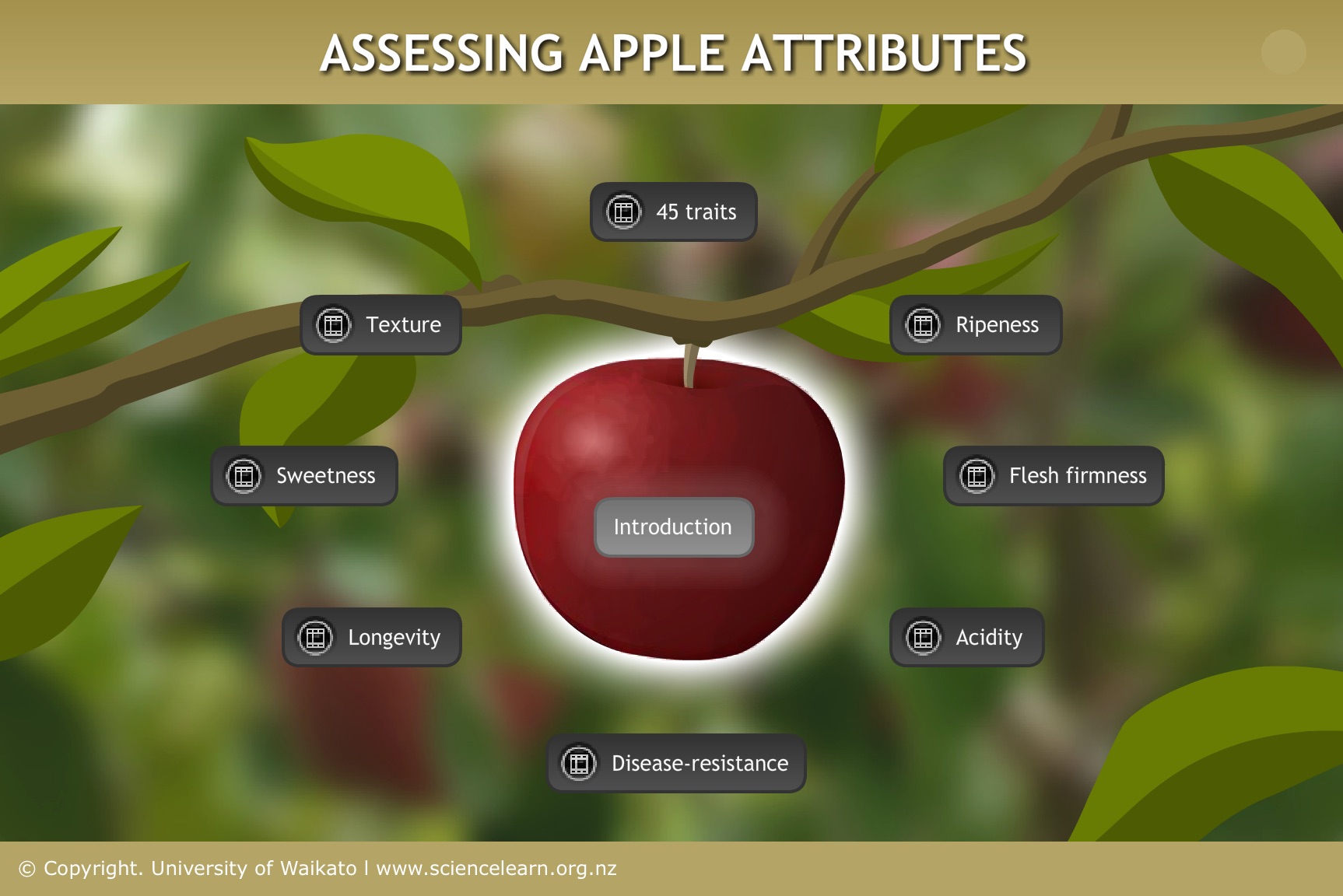Breeding a new apple cultivar takes a long time and involves many steps. The aim is to produce high-quality fruit that consumers will like and want to buy.
Breeding apples to increase quality
The point of apple breeding is usually to make better-quality apples. Today’s breeders also need to meet changing consumer demands and compete in global markets.
During breeding, a wide variety of qualities in the apple and the tree are tested – approximately 45 different traits. Any new apple cultivar must meet quality criteria for each trait to be considered viable for commercial production.
Breeders at Plant & Food Research (PFR) are developing a new red-fleshed apple. Although many red-fleshed apples were brought to PFR from Kazakhstan in the 1990s, they didn’t have the quality attributes consumers expect in a modern eating apple. So far, breeding has led to a red-fleshed cultivar with better qualities, but some traits still need to be improved.
These two articles provide further information Why breed a red-fleshed apple? and The germplasm collection: a library of apples.
Introducing a single trait
There are several approaches to breeding, but when breeders want to introduce a single trait that is simply inherited, like red flesh, they use a modified backcrossing approach. This means that successive generations of apples with the trait of interest are crossed with a different high-quality parent at each generation. The aim is to introgress that trait into a fruit that is otherwise similar to other high-quality apples.
To select parents for each round of crossing, breeders look at the characteristics (phenotype) of both parents as well as their genetic make-up (genotype). After several rounds of backcrossing, breeders select ‘elite breeding parents’, which can then be crossed once more to produce candidate apples for a new cultivar.
The final breeding step: identifying cultivars
In the cultivar-breeding step, the elite breeding parents are crossed together. This cross is on a much larger scale than the previous ones – tens of thousands of seeds may be produced. Breeders then grow the seeds and look closely at the quality of the fruit on the seedling trees. The most promising plants are selected for further study.
At this stage, breeders look at how the apple trees will perform under a range of conditions (for instance, in different apple-growing regions of New Zealand) and how individual apples from each tree will vary. For these studies, possible cultivars are propagated.
Propagation replicates the new cultivar
Breeders use propagation to produce many plants from a single seedling. This asexual reproduction ensures all plants of a particular cultivar are genetically identical (i.e. clones) and therefore have the same characteristics.
To propagate a cultivar, material from the original tree (scion) is joined to a rootstock. The rootstock provides the roots for the new plant and the scion forms the top part of the new plant, which produces the fruit. The rootstock comes from another cultivar selected specifically for its ability to grow well in the soil and induce desirable growth habits of the scion (such as dwarfing).
The scion is introduced to the rootstock by either grafting or budding. In grafting, a length of dormant wood from the original tree is notched into the rootstock. In budding, small buds are notched into the rootstock. Budding produces more trees from the same amount of wood than grafting.
Controlled pollination is crucial for apple breeding
Like all flowering plants, apples reproduce sexually by pollination. In the wild, apple trees are generally pollinated by a large number of other apple seedlings, which leads to immense diversity. Therefore, to control both parents and have greater influence over the genetic make-up of the progeny, breeders carry out pollination manually. This involves:
- harvesting pollen from the flowers of the male parent
- removing the male parts of the flowers on the female parent to prevent any self-pollination (although this is unlikely because apples are self-incompatible)
- painting pollen from the male parent onto the remaining parts of the female parent’s flowers – the pollen moves down the stigma of the flower and fertilises the egg cells.
Fast-tracking the breeding process
Breeding a new apple cultivar traditionally takes around 15 years. There are some techniques breeders can use to fast-track breeding, such as growing seedlings rapidly in a glasshouse to produce fruit more quickly.
Researchers are also beginning to use genetic information about apples to help select parents for each round of breeding. These techniques can make the breeding process more efficient or speed it up.
Follow up this article with our Genetic information and apple breeding article.
Additional resources
Flowering plant life cycles has information on the process of pollination.
Follow the process that PollenPlus™ uses to prepare kiwifruit pollen for use in artificial pollination in this interactive.
Learn how flowering plants use self-pollination or cross-pollination in their reproduction in this video, Plant pollination. The functions of pollen and nectar are also explained.
Read about flower parts and their role in pollination and fertilisation.
Useful link
In Pollination in the wild, read about how insects and others promote cross-pollination in wild plants.


